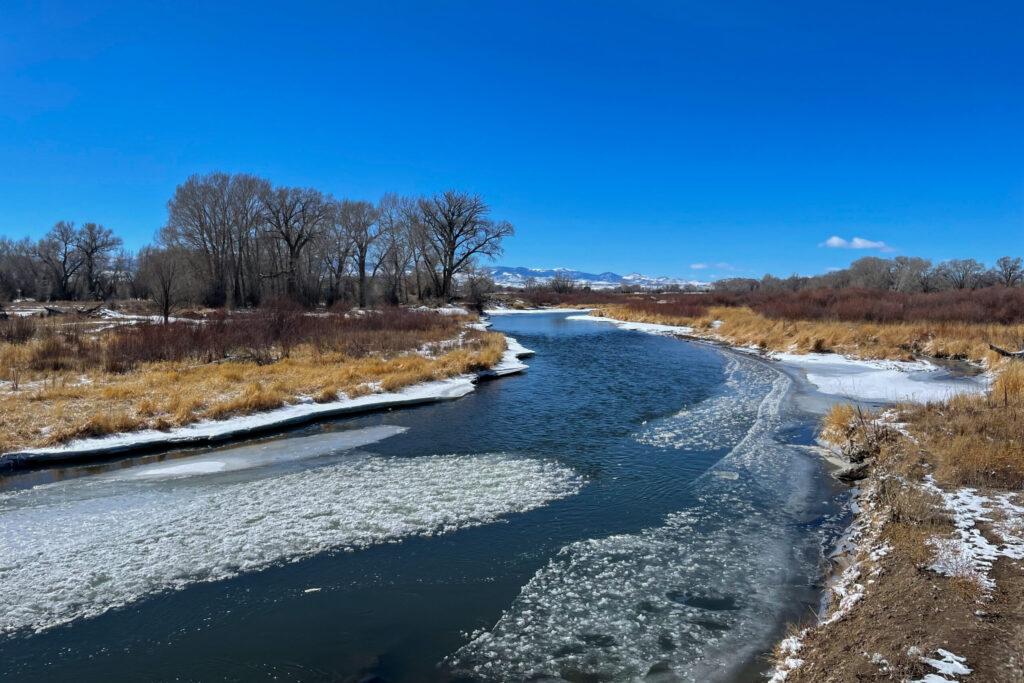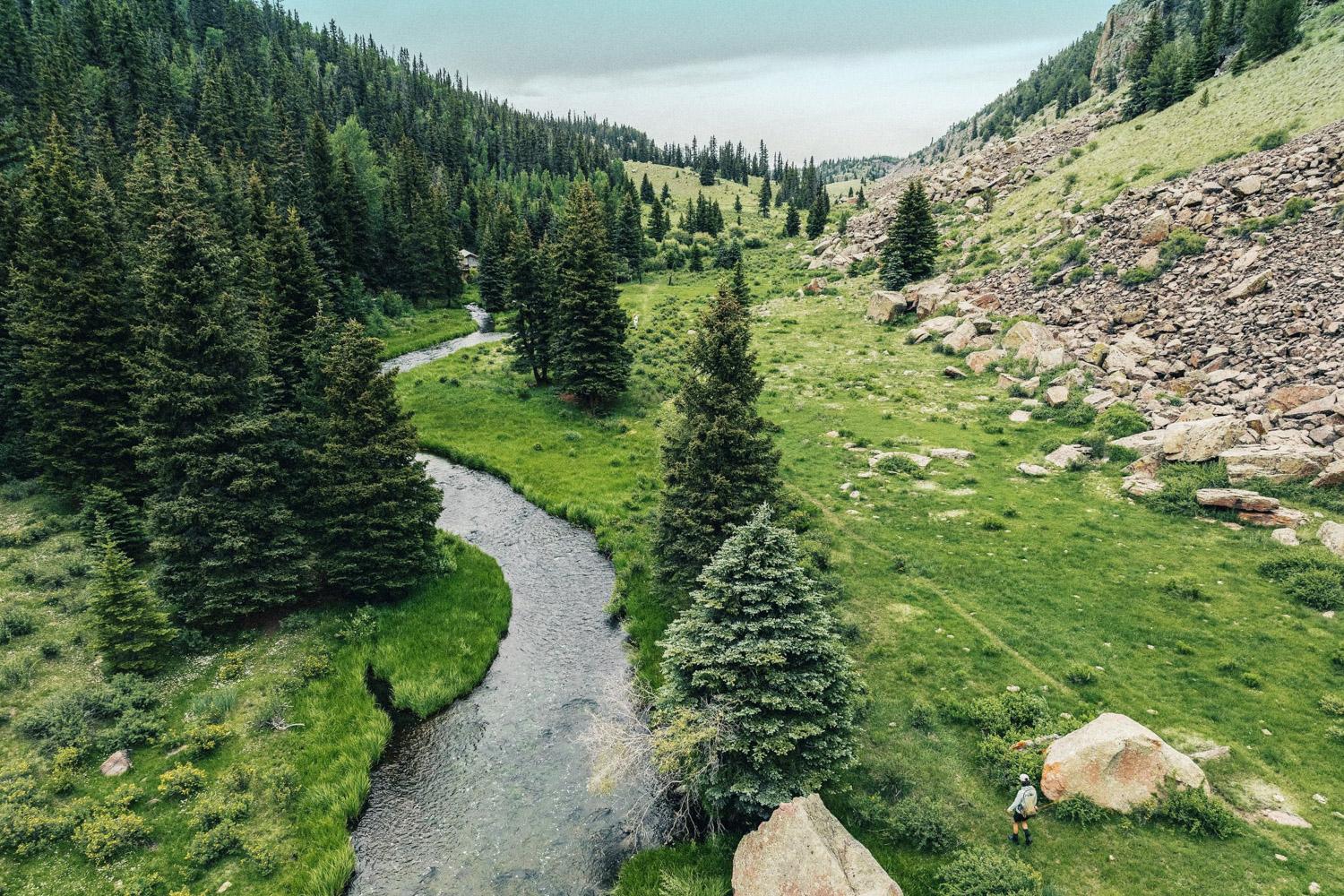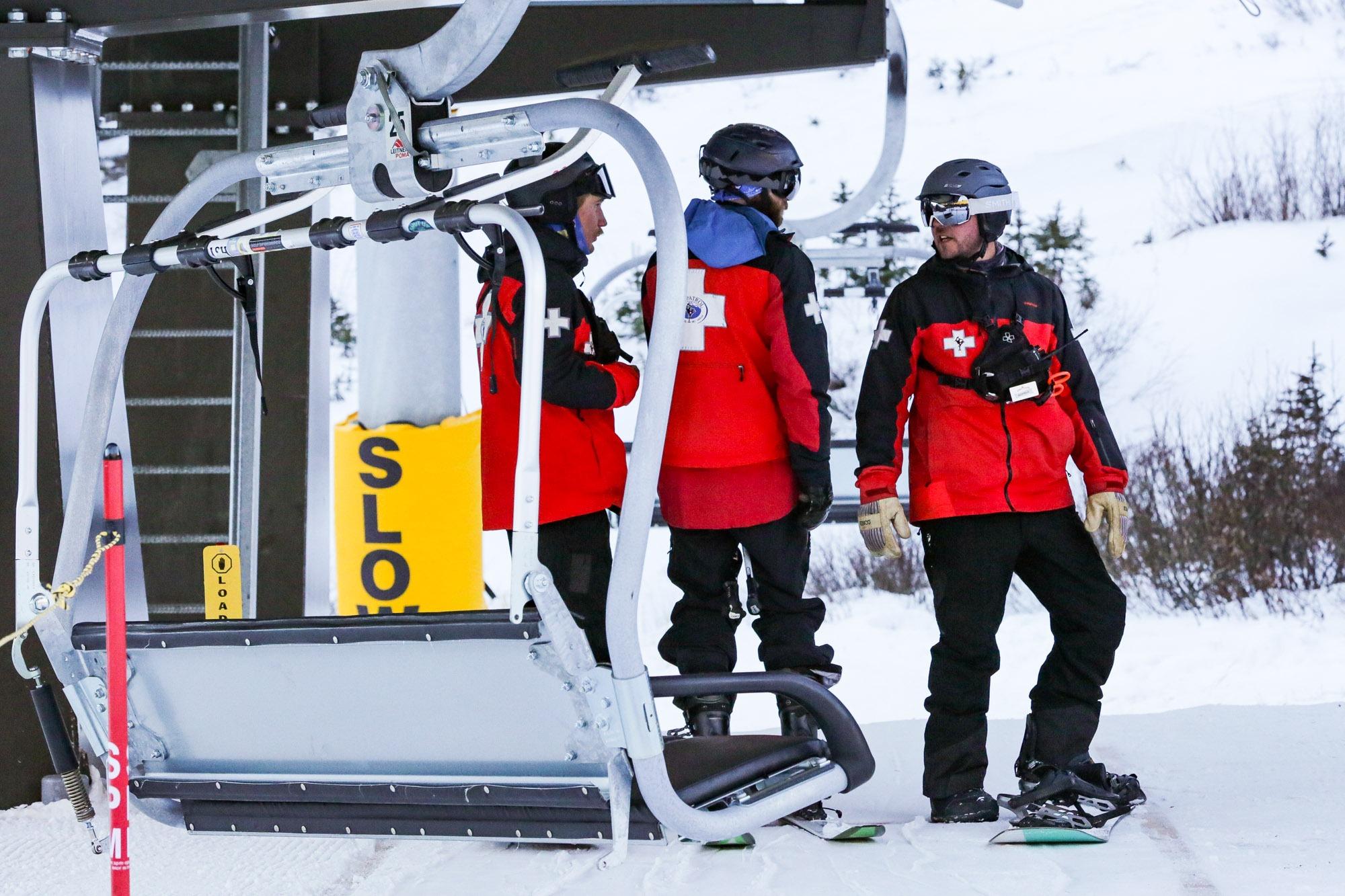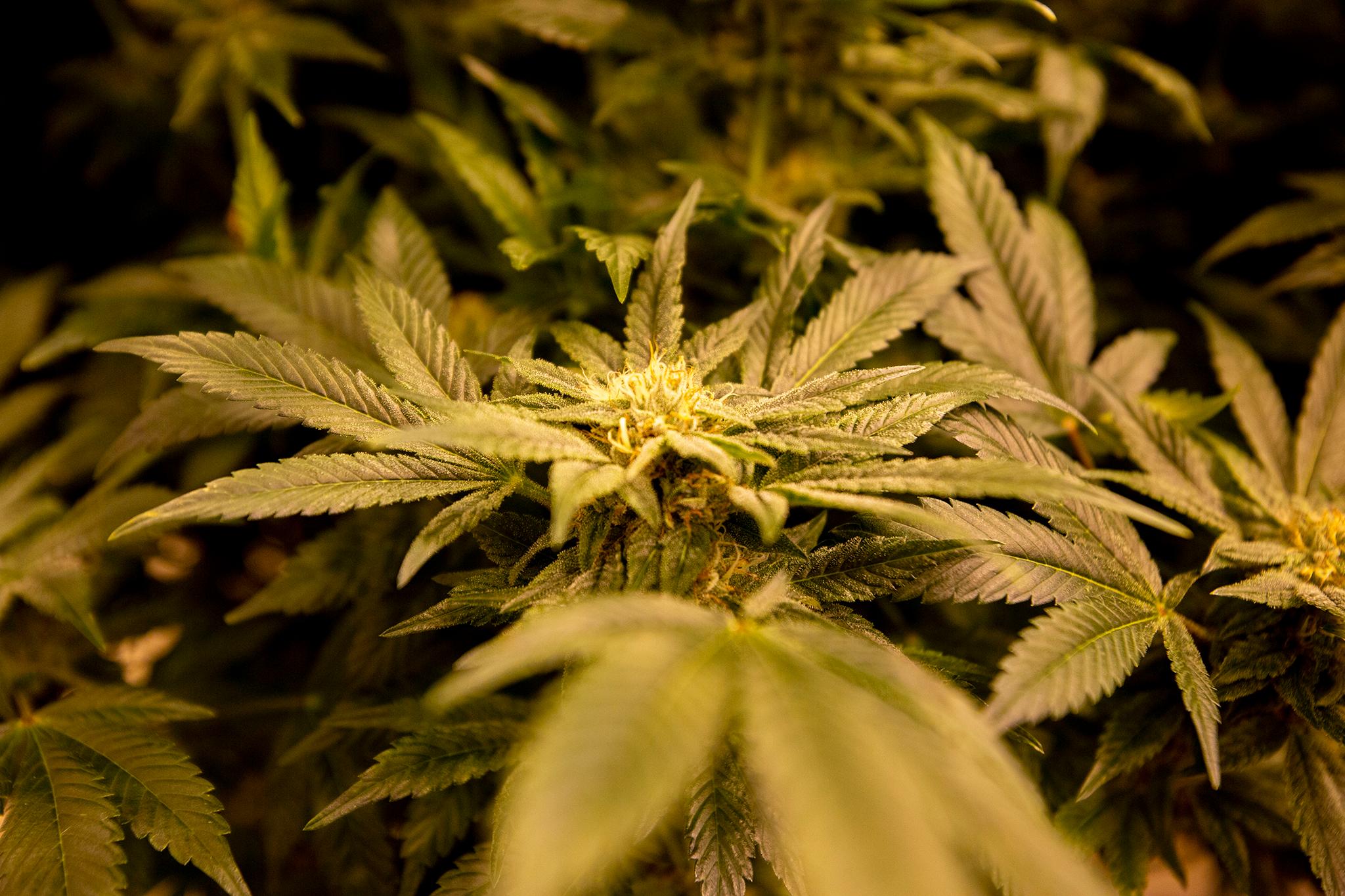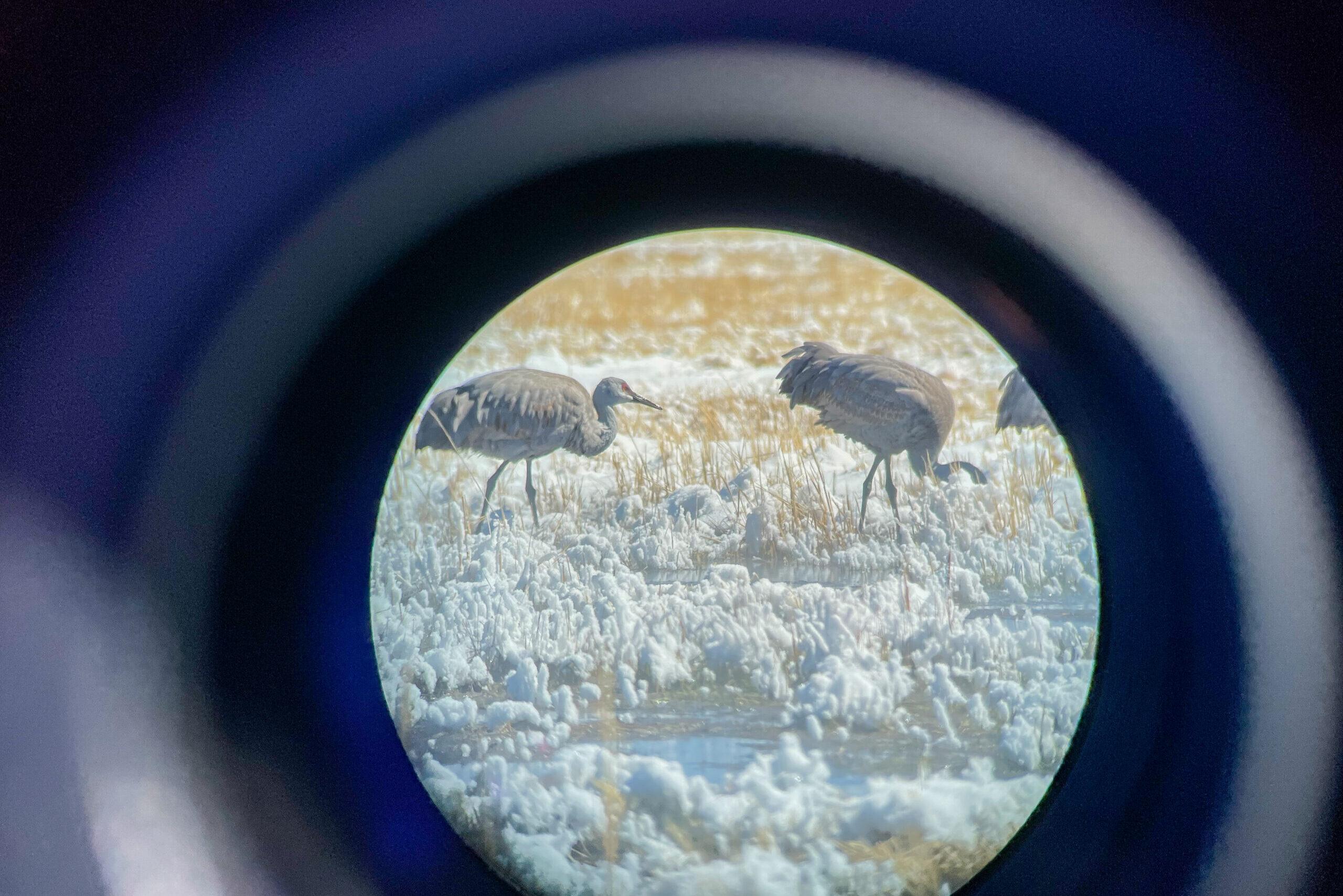
Douglas County is the second-fastest-growing county in Colorado. Its primary water source is underground, pumped to the surface from aquifers that are drying up.
Commissioners for the county south of Denver say securing a sustainable water supply to make sure taps keep flowing in the future is their highest priority.
Renewable Water Resources, a company backed by Denver developers and former Colorado Gov. Bill Owens, has approached the commissioners with a possible solution: pay farmers and ranchers in the San Luis valley south of the county a premium for their water, and pump billions of gallons 200 miles with a new pipeline to the Front Range.
But the San Luis Valley has its own share of water woes. Communities in the region, made up of six counties surrounded by the San Juan and the Sangre de Cristo mountain ranges, are struggling to adapt to a warmer climate that’s fueling a 20-year drought across the Southwest.
There’s growing and vocal local opposition to the proposal to take water from the valley, which critics say needs every drop to support its agricultural and recreational economy.
Thousands of sandhill cranes migrate through southern Colorado in early March.
Wildlife biologist Jenny Nehring sets up her birding scope in the parking lot of a wildlife refuge. She focuses her lens on a group of cranes standing in a snowy field. Suddenly a group takes to the sky, scared by a bald eagle flying high above. Eventually, the cranes settle down and return to the ground.
“They come here because the San Luis Valley is actually a vast wetland,” said Nehring, a San Luis Valley National Wildlife Refuge board member who helps organize the annual Crane Festival. “That’s difficult for people to believe because it’s an arid landscape.”
The base of the valley gets less than half the amount of annual snow and rain as the Front Range, and the wetlands are fed by the water that melts from the surrounding mountains, which fills the Rio Grande River and the aquifers underneath it.
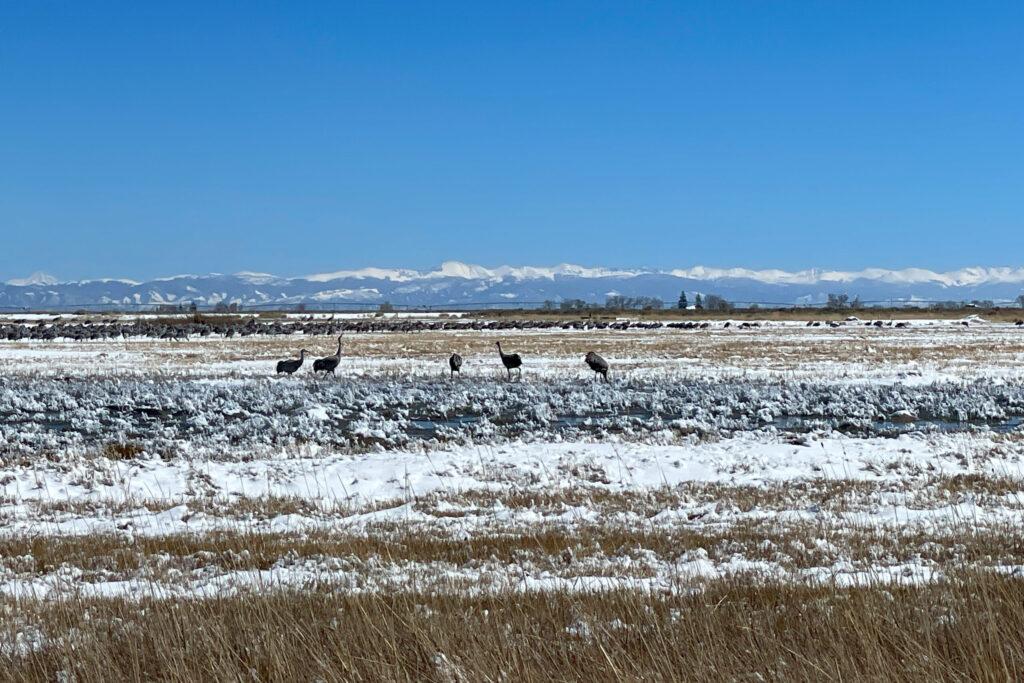
Farmers and ranchers rely heavily on the valley’s aquifer water, which they pump to the surface faster than it can refill. At the same time, Nehring says rising temperatures and less precipitation mean the aquifer is running up a water debt and is not refilling like it used to in the past.
As water underground levels drop, rivers and wetlands on the surface get shallower and shorter, Nehring said. She’s concerned the local environments and ecosystems would suffer if water is pumped out of the San Luis Valley and sent to another, disconnected river basin.
“Further withdrawals of water from that aquifer can do nothing but harm us more,” Nehring said.
Renewable Water Resources’ proposal would spend millions of dollars, including $20 million of Douglas County’s COVID-19 pandemic recovery American Rescue Plan Act funds, to buy water rights from San Luis Valley farmers and ranchers.
Heather Dutton, the San Luis Valley Water Conservancy District manager, grew up among acres of potato, barley and cattle farms. She says everything in the valley revolves around the agriculture economy.
“Obviously everybody needs drinking water to live, but we all have water tied to our livelihoods as well,” Dutton said.
Dutton is worried that losing water to Douglas County will mean a weaker economy in the San Luis Valley.
She’s also concerned that the move would hurt the community’s progress to be more sustainable. There’s a state mandate to pump less water in the valley to protect the aquifer. If the mandate isn’t met, there could be a massive shutdown of farm wells. Dutton says if Douglas County takes some of the water the valley has to work with, it will make meeting that deadline even harder.
“There’s no sugar coating it, it’s been hard and we are not there yet,” Dutton said.
On a drive around Alamosa, Dutton points to farmland that's now covered in native bushes and grasses. She said that the local water conservancy district paid the farmer who owns the land to stop watering so that water remains in the aquifer.
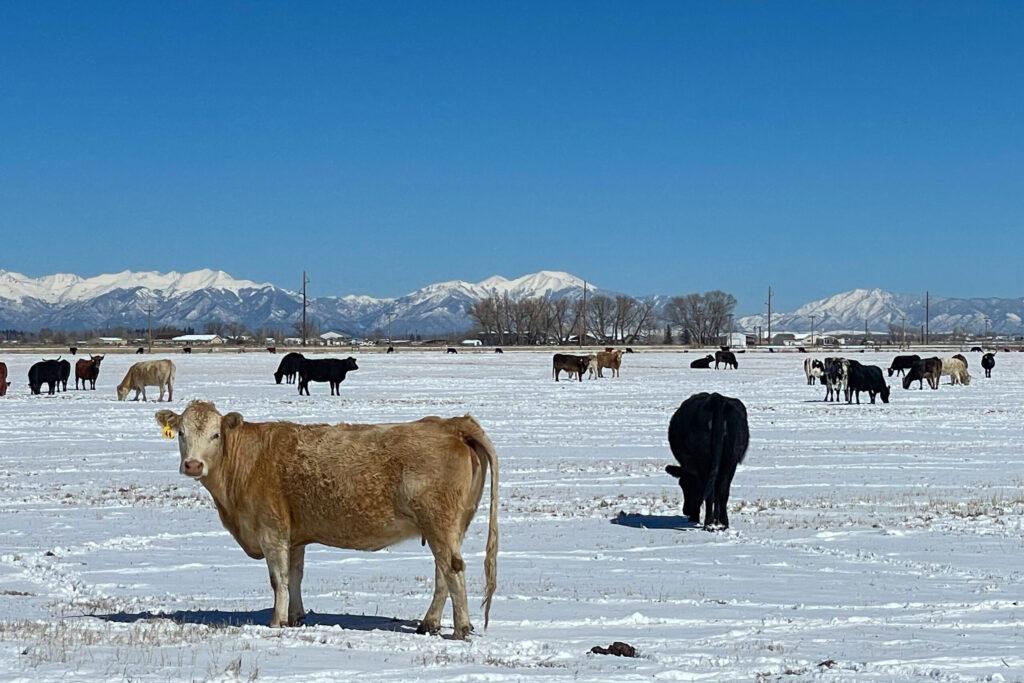
While that water is no longer used for growing food, it helps the San Luis Valley in other ways if it stays in the ground. If the Douglas County plan is approved, it will take about 5 percent of what farmers and ranchers in the valley pump annually and move it to a new river basin. Renewable Water Resources says the project would tap enough water for about 40,000 homes in the Front Range.
Dutton says the San Luis Valley has been working for decades to boost water supplies in its aquifer and is insulted by the Douglas County proposal.
“To us, this is home. This is generations of our families that have lived here and that want to keep living here. And they’re trying really hard to leave something for the next generation,” Dutton said.
Projects like the one proposed for Douglas County and the San Luis Valley have met more opposition as water becomes more scarce.
Colorado has a history of using pipelines and pumps that cover miles and cross mountains to move water closer to people. As water becomes more scarce, projects like the one proposed by Renewable Water Resources have been met with stiff opposition and struggle to become a reality.
Sean Tonner, who once served as deputy chief of staff to former Colorado Gov. Owen and is the company's managing partner, said the Douglas County proposal wouldn't hurt the San Luis Valley. He said the project would help the environment and the local economy and called it a win-win: Douglas County has money but lacks water, while the San Luis Valley has water but lacks money.
The water deal would include a $50 million community fund for San Luis Valley leaders to use how they see fit. Some of the water Renewable Water Resources purchases that might otherwise be used to water farms and ranches would remain in the valley, where it would replenish rivers and streams and help meet the state’s sustainability deadline, Tonner said. He said the Douglas County project is also designed to reach water sources so deep underground it won’t hurt supplies at the surface.
Officials with the Colorado Division of Water Resources, however, say there is “no deep, untapped” source of water in the San Luis Valley and that pumping water from the bottom of the aquifer would still hurt other wells, rivers and streams.
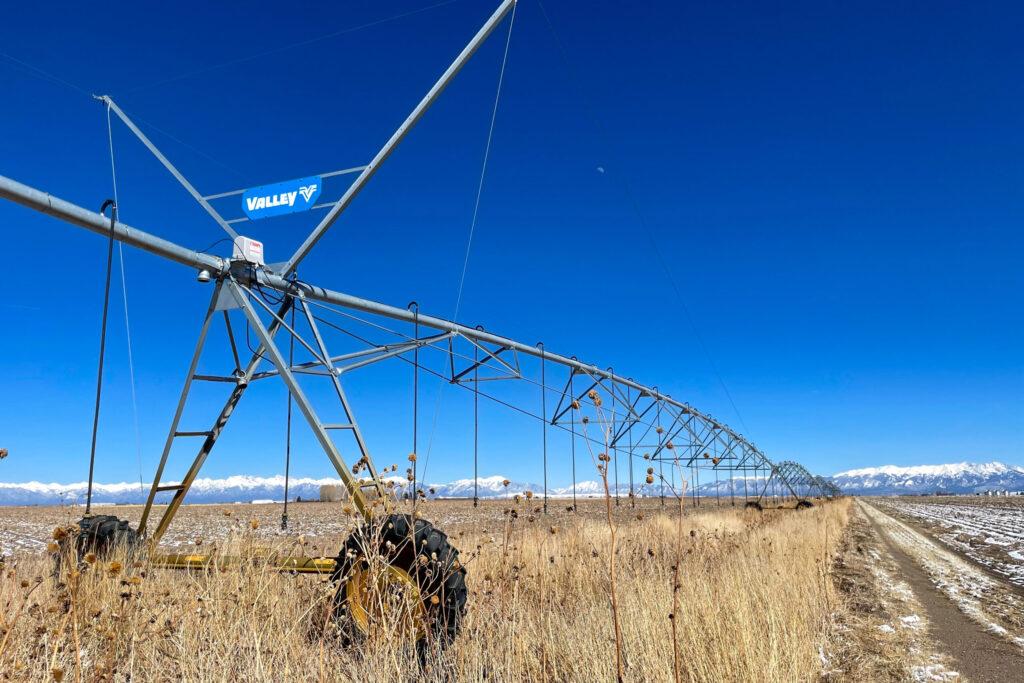
To increase the incentive to keep water in the valley, Colorado lawmakers are considering a bill that would provide millions of dollars to pay farmers and ranchers to use less water. Tonner says his company is offering to pay more. He said their water rights are often the most valuable asset they own, but the local water district is offering them "pennies on the dollar."
“Farmers aren’t stupid,” Tonner said. “So they look at it and say, ‘You know, if I’m going to sell my water to the district or sell it to you, I’d rather sell it to you.’”
Tonner said he has a list of farmers who want to sell their water, enough to meet the company’s goal of sending 22,000 acre-feet to Douglas County. But Tonner wouldn’t share that list with CPR News.
Publicly, local farming and environmental groups oppose the idea, as does Gov. Jared Polis and U.S. Senators Michael Bennet and John Hickenlooper. The two sent a letter to U.S. Department of the Interior Secretary Deb Haaland and U.S. Department of Agriculture Secretary Tom Vilsack that calls for Haaland’s office to oppose the proposal if it comes up for federal review.
Tonner said projects like his are needed to address the state’s water challenges. Douglas County Commissions are expected to decide soon on if they’ll move forward with the proposal.
